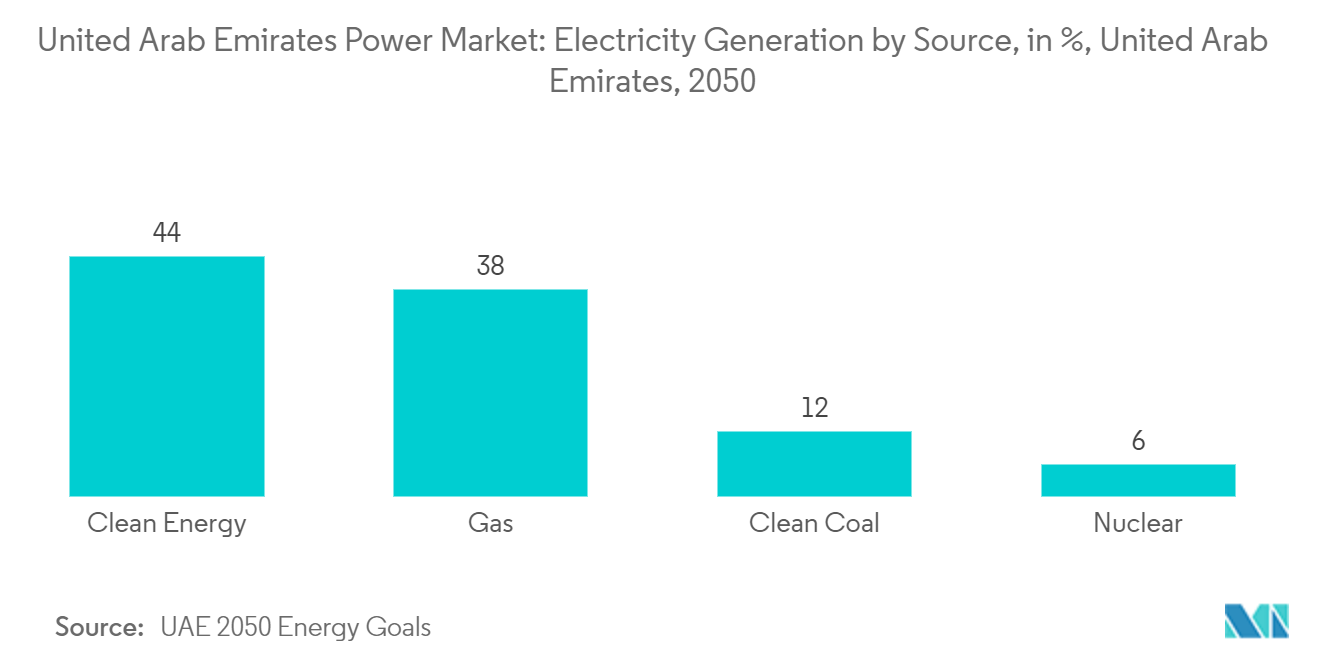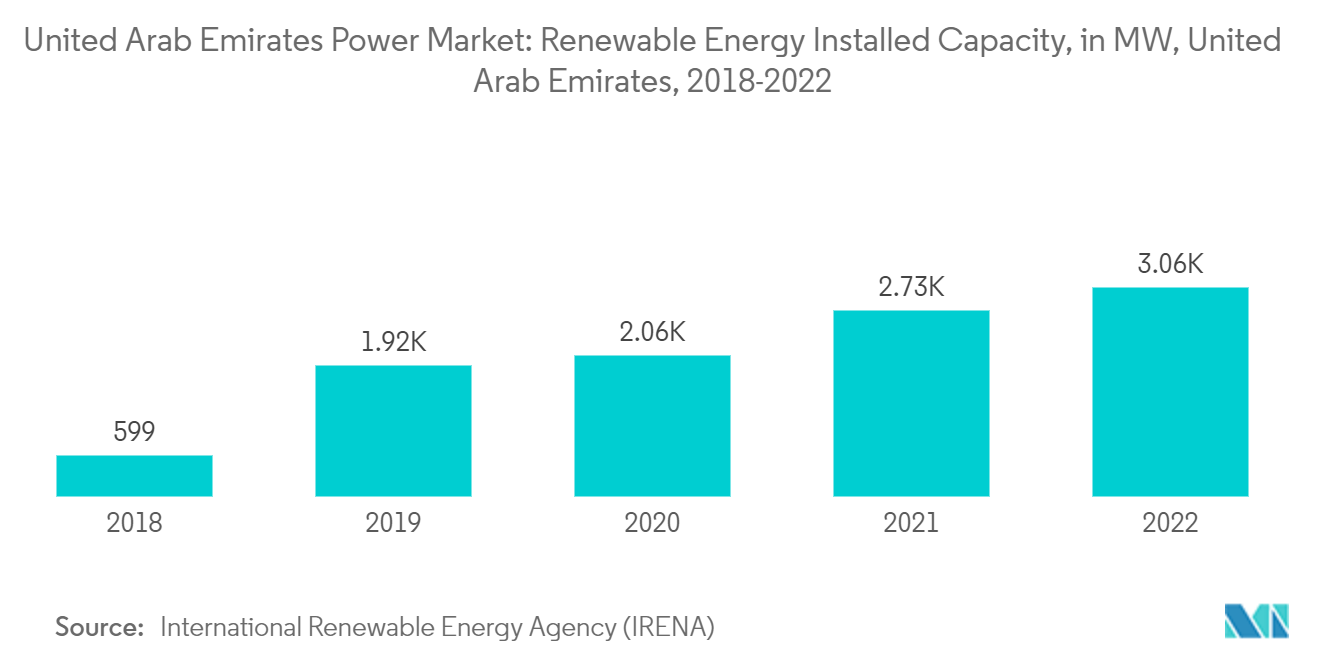Market Trends of UAE Power Industry
Natural Gas segment Expected to Dominate the market
- The United Arab Emirates possesses significant natural gas reserves, making it a reliable and cost-effective energy source for power generation. The country has invested in exploration and development activities to enhance its gas production capacity, ensuring a stable supply for the power sector.
- According to the International Energy Agency (IEA), the United Arab Emirates (UAE) had a total electricity generation capacity of approximately 35 GW in 2021. Out of this capacity, gas-fired power plants accounted for around 31 GW, contributing over 88% to the nation's electricity production. Despite efforts to integrate renewable energy sources into the energy mix, the IEA anticipates that gas will still contribute approximately 65% to the country's electricity generation by 2025.
- The United Arab Emirates Energy Strategy 2050 aims to achieve a well-balanced energy mix that addresses the country's economic needs and environmental objectives. The strategy targets a combination of renewable, nuclear, and clean energy sources, intending to comprise 44 percent clean energy, 38 percent gas, 12 percent clean coal, and 6 percent nuclear in the overall energy composition.
- Moreover, the United Arab Emirates has a well-developed natural gas infrastructure, including pipelines and storage facilities. This infrastructure enables efficient and reliable delivery of natural gas to power plants nationwide. The existing infrastructure provides a competitive advantage for natural gas utilization in the power sector.
- For instance, in February 2023, Fujairah Terminals successfully managed the transportation of three of the largest gas turbines ever deployed in the United Arab Emirates region. Expected to be operational in 2023, the Fujairah F3 Power Plant Project will likely be the largest Combined Cycle Power Plant (CCPP) facility in the United Arab Emirates. Its substantial capacity is expected to generate enough electricity to meet the needs of approximately 380,000 households nationwide.
- Owing to these developments, it can be predicted that the natural gas-fired power generation segment will have a significant share in the near future.

Renewable Power Generation Expected to Drive the Market
- Historically, hydrocarbons have played a pivotal role in fueling the power sector of the United Arab Emirates (UAE). The nation has heavily relied on its abundant oil and gas reserves to meet its growing electricity demand. However, recognizing the pressing need for sustainable energy solutions, the United Arab Emirates has embarked on a transformative path in recent years, placing greater emphasis on developing and integrating clean power sources.
- The United Arab Emirates' escalating power demand primarily drives the motivation for this shift towards clean power. As the country's population expands and its economy flourishes, the need for electricity rises exponentially. To cater to this surging demand, the United Arab Emirates acknowledges the imperative to diversify its energy mix and reduce its reliance on hydrocarbons.
- In line with its Energy Plan for 2050, the United Arab Emirates (UAE) is actively pursuing diversification of its power mix. The plan outlines an ambitious vision that includes generating 44% of the country's electricity from renewable sources, 6% from nuclear energy, 12% from clean coal, and the remaining portion from natural gas by the year 2050. To support this transition and meet the increasing energy demand while fostering sustainable economic growth, the United Arab Emirates aims to invest USD 160 billion by 2050.
- In July 2022, Dubai Electricity and Water Authority (DEWA) declared its objective of collaborating with the Independent Power Producer (IPP) to create 4 GW worth of renewable energy projects. The total investment needed for these initiatives is estimated to exceed USD 11 billion. DEWA is currently working on developing the Mohammed bin Rashid Al Maktoum Solar Park, which will serve as a solar project IPP model. By 2030, the park is expected to have a production capacity of 5,000 MW.
- According to International Renewable Energy Agency, the country has grown significantly in its installed renewable energy capacity. In 2022 the installed renewable energy capacity was 3058 GW, with a growth rate of almost 12% compared to 2021.
- These developments to increase renewables' share in the power generation sector will likely bolster market growth.


